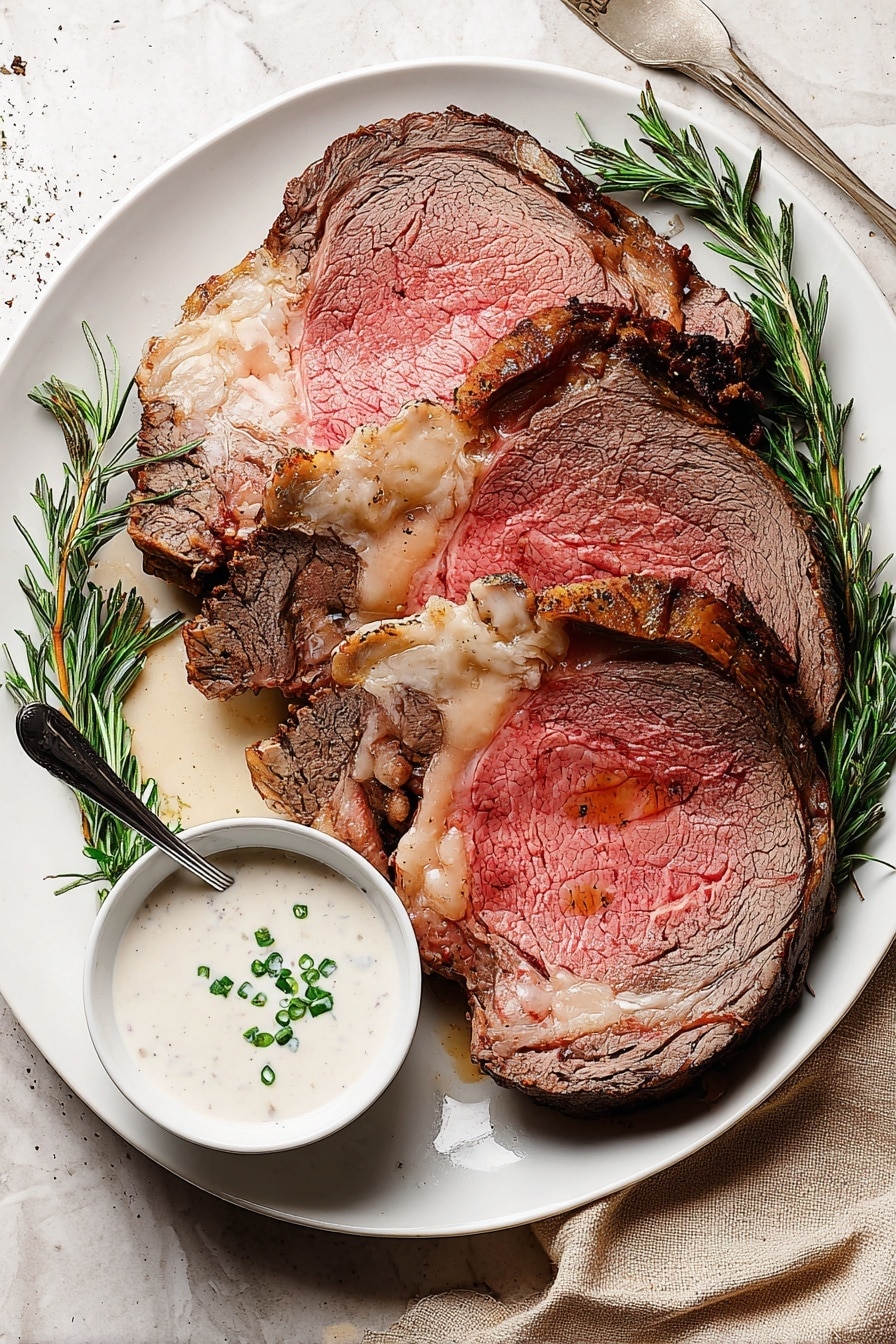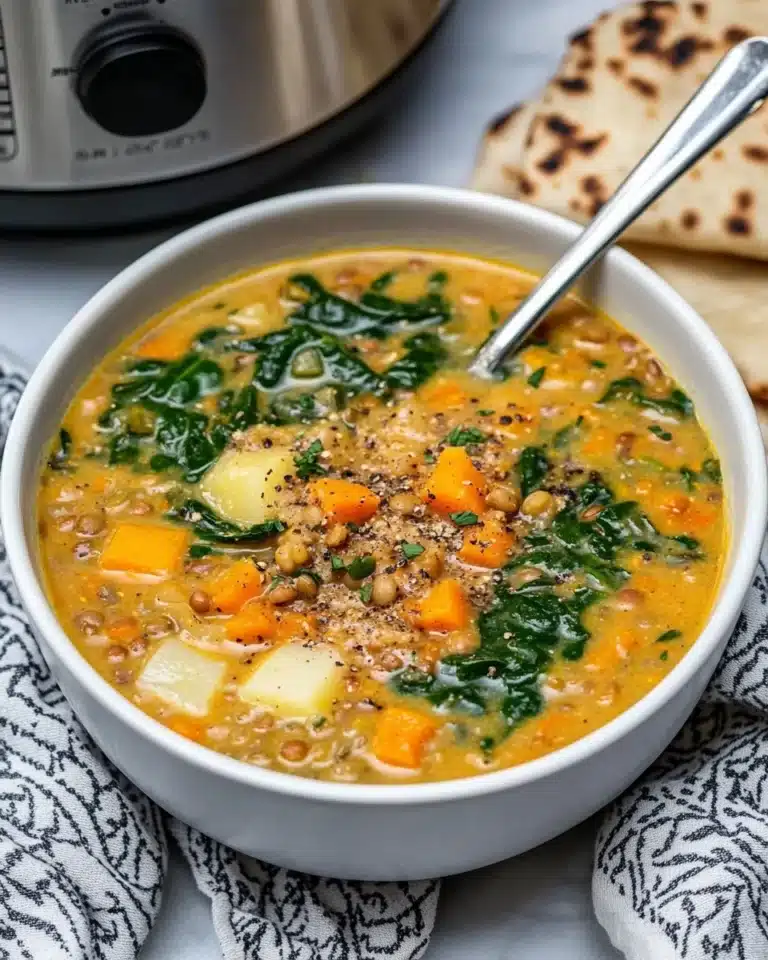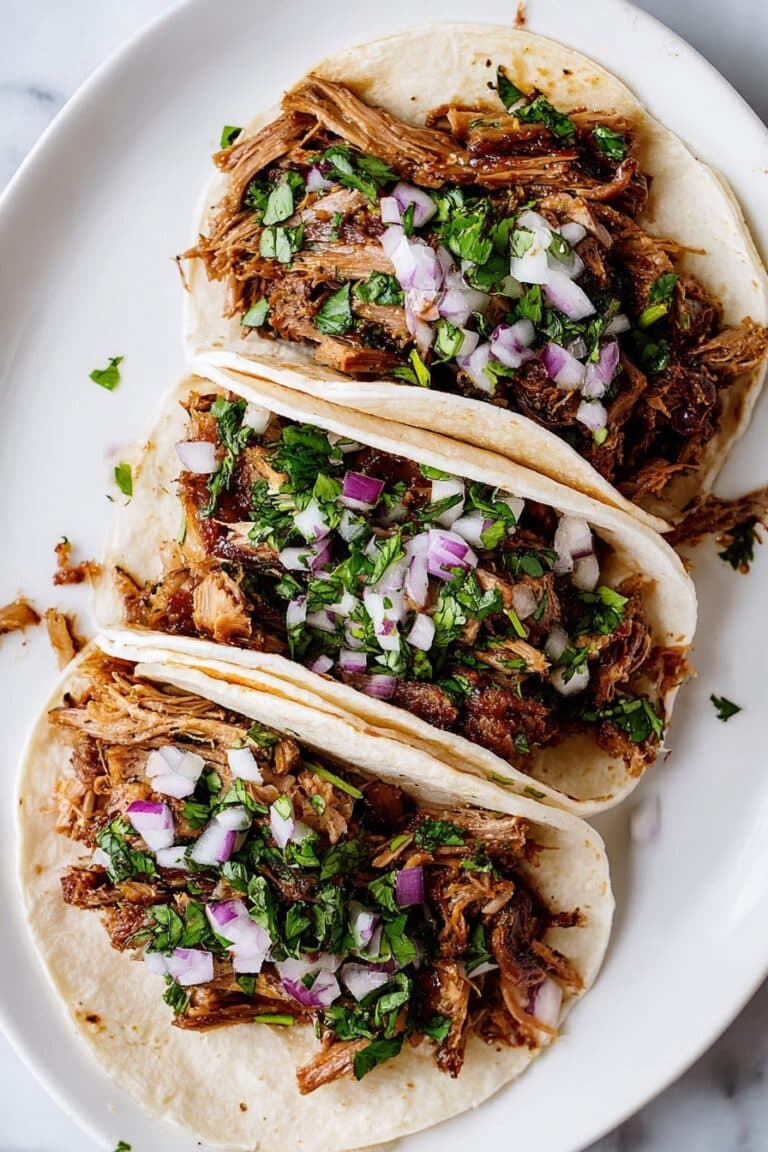If you’re dreaming of a steakhouse-worthy centerpiece that practically melts in your mouth, this Reverse Sear Prime Rib Recipe is your golden ticket. With its deeply seasoned, juicy interior wrapped in a perfectly crisp crust, it’s the star dish that brings celebration vibes to any meal. Trust me, once you try this method, your prime rib will never be the same!
Why You Should Make This Recipe
Unmatched tenderness and flavor: The slow roasting gently cooks the meat evenly, allowing the spices to penetrate deeply for an incredibly juicy bite.
Perfect crust every time: The final high-heat sear creates a mouthwatering bark that locks in all those savory juices.
Easy to prepare ahead: The overnight dry brine means you can prep the day before and enjoy stress-free cooking.
Impresses any crowd: Whether it’s a holiday feast or special dinner, this reverse sear prime rib recipe steals the spotlight effortlessly.

Ingredients & Substitutions
You’ll only need a handful of simple, fresh ingredients to create this luxurious dish—all carefully chosen to enhance the prime rib’s rich flavor, tender texture, and beautiful golden crust. Each component works together to elevate the taste experience without overwhelming the natural goodness of the beef.
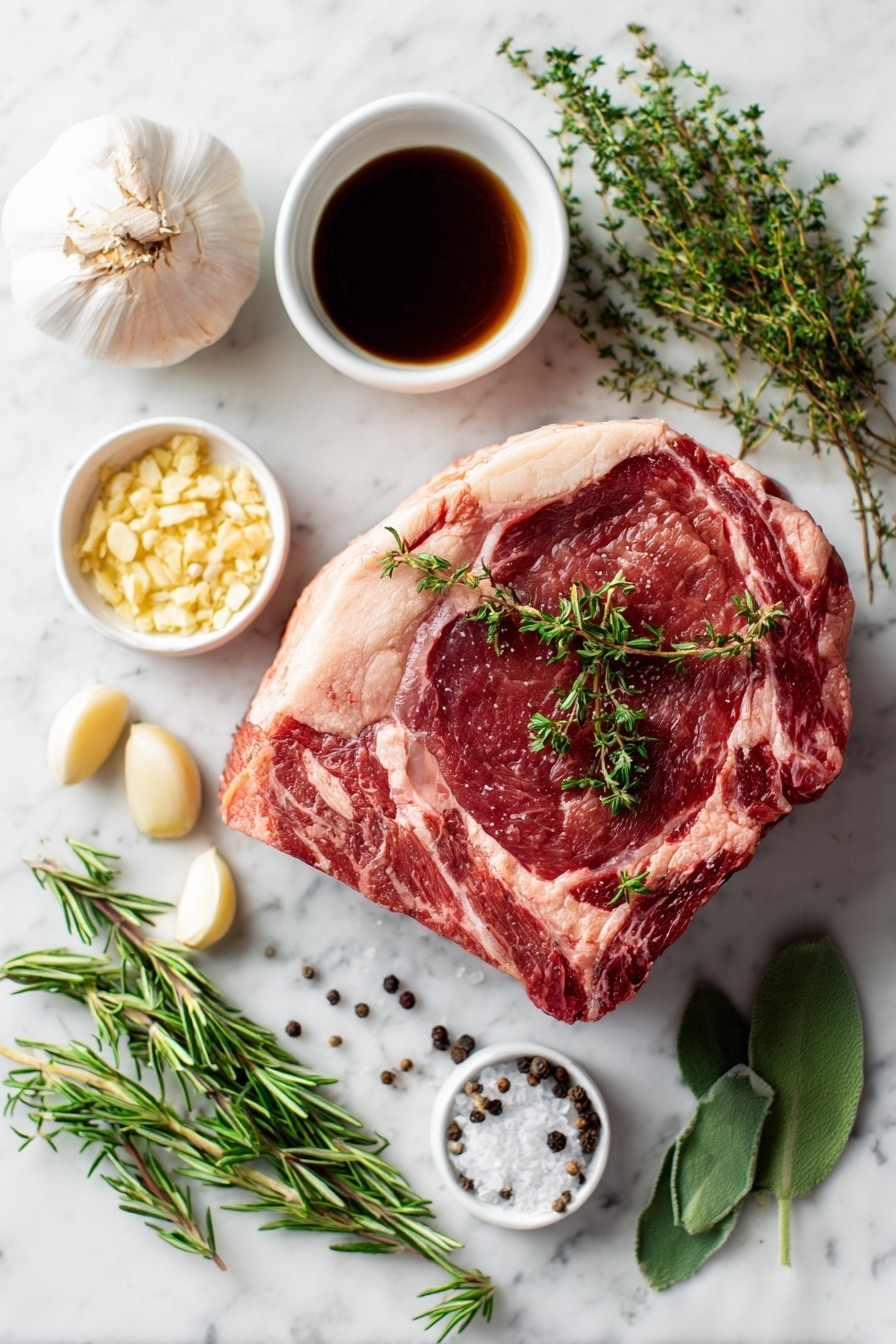
- 6 lbs bone-in prime rib roast: Ask your butcher to remove and re-tie the bone—this makes carving easier while keeping the flavor rich and juicy.
- Worcestershire sauce: Adds a subtle tangy umami that seeps into the meat, helping to tenderize and moisten the roast.
- Fresh garlic, rosemary, sage, thyme: The aromatic herbs combined with garlic provide classic, earthy notes that pair perfectly with beef.
- Kosher salt and black pepper: Essential for seasoning—the kosher salt helps draw out moisture for a crispy crust, while pepper adds gentle heat and depth.
How to Make Reverse Sear Prime Rib Recipe
Step 1: Prepare the Roast
Start by patting your tied bone-in prime rib dry with paper towels—dryness is key to getting that perfect crust later! Lightly score the fat cap with shallow cuts; this helps your seasoning penetrate deeper, adding flavor throughout the roast without cutting into the meat itself.
Step 2: Season and Dry Brine Overnight
Rub Worcestershire sauce all over the roast; this gives a subtle kick and locks in moisture. Then, mix your minced garlic and fresh herbs with kosher salt and black pepper, and rub this mix evenly on every side. Leave the roast uncovered on a wire rack inside the fridge for at least 12 hours—up to 24—to dry brine. This step is what transforms the meat, seasoning it deeply and ensuring a crispy, flavorful crust.
Step 3: Slow Roast Low and Slow
Bring your roast out of the fridge about an hour before cooking to take the chill off—this helps it cook evenly. Insert a probe thermometer in the thickest part, avoiding bone and fat, then slow roast at 250°F until the internal temperature hits 115°F for a perfect medium-rare. Patience here means juicy, tender meat all the way through.
Step 4: Rest the Roast
Remove your roast and tent it loosely with foil for about 30 minutes. This resting phase lets the juices redistribute, so they don’t escape during the final sear. Meanwhile, crank your oven temperature to a blazing 500°F—this is the secret to achieving that irresistible crust.
Step 5: Finish With a High-Heat Sear
Pop the roast back into the scorching oven without foil, and watch it closely until it reaches 130°F internally—that sweet spot for medium-rare prime rib with a gorgeously caramelized crust. This step only takes about 5-10 minutes, so stay nearby! Once it’s done, feel free to dig in right away—no resting needed here.
How to Serve Reverse Sear Prime Rib Recipe
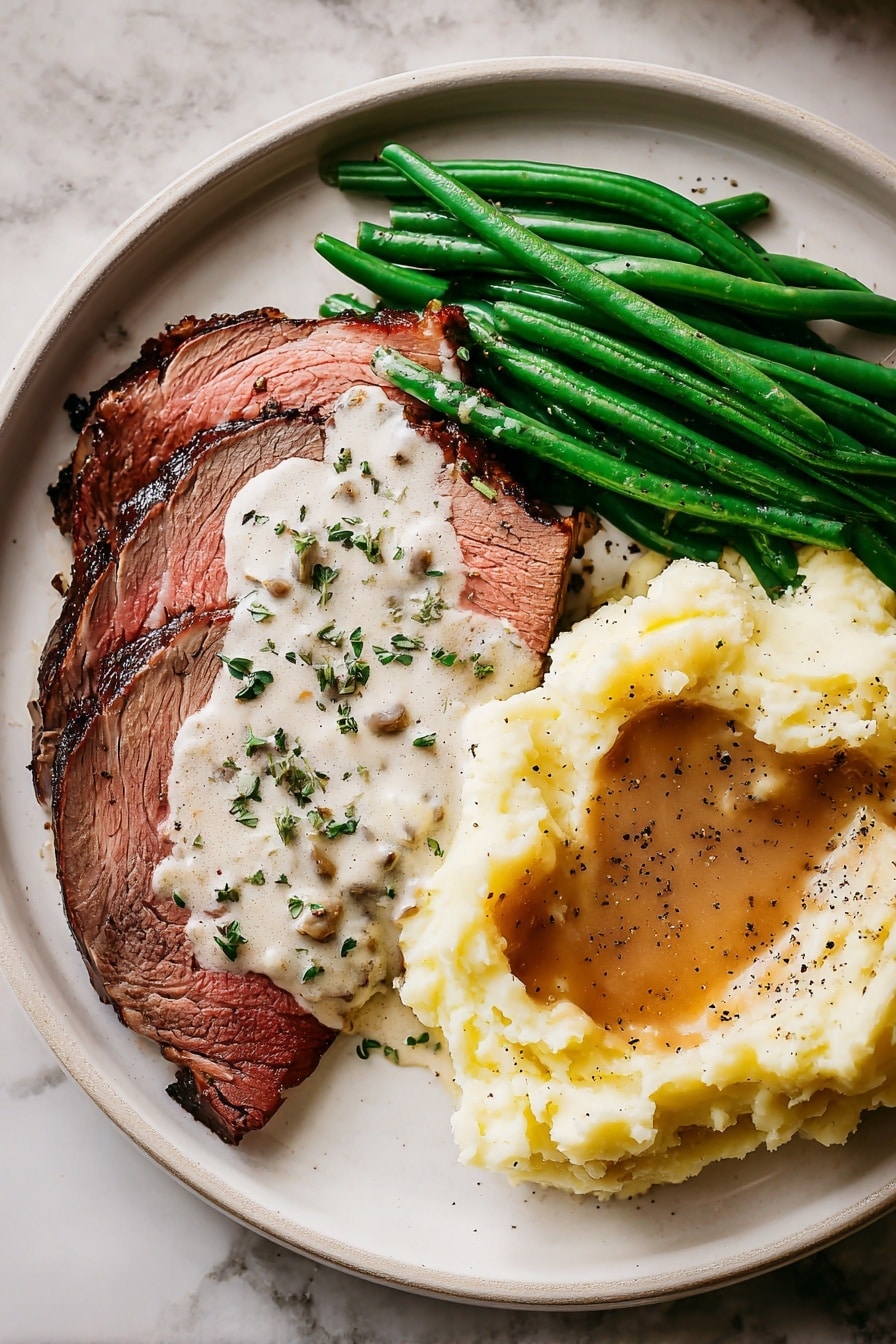
Garnishes
Keep garnishes simple to let your perfectly cooked prime rib shine—think fresh rosemary sprigs or a sprinkle of flaky sea salt for an elegant finish. You can also add a dollop of horseradish cream or a light drizzle of au jus to bring out more depth and tang.
Side Dishes
This reverse sear prime rib recipe pairs beautifully with classic sides like garlic mashed potatoes, roasted root vegetables, or a crisp green salad. Creamed spinach or buttery Yorkshire puddings also make excellent companions for that lush, juicy meat.
Creative Ways to Present
For a wow-worthy presentation, arrange slices fanned out on a warmed wooden cutting board garnished with fresh herbs and lemon wedges for subtle brightness. Adding small bowls of different mustards, horseradish, and gravy lets everyone customize their plate and keeps the vibe festive and interactive.
Make Ahead and Storage
Storing Leftovers
Once your prime rib cools completely, store leftovers in an airtight container or wrap tightly in foil or plastic wrap. This helps keep the flavors fresh and the meat moist for up to 4 days in the fridge—perfect for easy lunches or snacks the next day.
Freezing
Want to save prime rib for later? Slice your roast first, then wrap each portion tightly in plastic wrap, placing them in freezer-safe bags or containers. This locks in freshness and flavor for up to 3 months, making for convenient, delicious meals whenever you crave that special cut.
Reheating
The best way to reheat your leftover prime rib is gently and slowly. Place your slices in a baking dish with a splash of beef broth, cover with foil, and warm in a 275°F oven until heated through—about 10-15 minutes. Avoid the microwave, which can dry out and toughen this tender cut.
FAQs
-
Can I use a boneless prime rib roast for this recipe?
Absolutely! While this Reverse Sear Prime Rib Recipe shines with the bone in for added flavor and moisture, a boneless roast works just as well. Just adjust your cooking time slightly, as boneless cuts may cook a bit faster.
-
Why is the slow roasting step important in the reverse sear method?
The slow roast gently and evenly brings the internal temperature up, allowing the meat to cook throughout without drying out. This step ensures maximum tenderness before the final sear creates a flavorful crust.
-
Can I skip the overnight dry brine?
While you can cook the prime rib without dry brining, skipping this step means missing out on deeper seasoning and a better crust. The overnight brine is key to unlocking the full flavor potential of the roast.
-
How do I know when the prime rib is done?
Using a reliable meat thermometer is essential. For medium-rare, aim for 130°F after the final sear. Remember the meat rests and carries over cooks slightly, so removing it at the right temperature ensures perfect results.
Final Thoughts
This Reverse Sear Prime Rib Recipe is a game changer for anyone who loves a show-stopping roast with minimal fuss but maximum flavor. Whether it’s a holiday gathering or a special weekend treat, you’re just a few steps away from impressing your family and friends with a prime rib worthy of the finest steakhouse. Don’t hesitate—give this recipe a whirl and savor every juicy, herb-kissed slice!
Print
Reverse Sear Prime Rib Recipe
- Prep Time: 15 minutes
- Cook Time: 3 hours 40 minutes
- Total Time: 1 day 3 hours 55 minutes
- Yield: 8–10 servings 1x
- Category: Main Course
- Method: Baking
- Cuisine: American
Description
This Reverse Sear Prime Rib recipe offers a perfectly cooked, tender, and flavorful roast with a beautiful crust. The process involves a slow roast at a low temperature followed by a quick high-heat sear, ensuring juicy meat with a deliciously caramelized exterior. A dry brine with fresh herbs and garlic enhances the flavor while preserving moisture. Ideal for special occasions and holiday meals.
Ingredients
Prime Rib Roast
- 6 lbs bone-in prime rib roast (bone removed and tied back on by the butcher)
Seasoning and Dry Brine
- 3 tablespoons Worcestershire sauce
- 3 large garlic cloves, minced
- 1 tablespoon fresh rosemary leaves, finely chopped
- 1 tablespoon fresh sage leaves, finely chopped
- 1 tablespoon fresh thyme leaves
- 1 tablespoon kosher salt (Windsor or Morton’s brand)
- ½ tablespoon black pepper
Instructions
- Prepare the Roast: If your butcher removed and tied the bone back on, leave it tied. Pat the entire roast dry with paper towels. Lightly score the fat cap with small shallow cuts (avoid cutting into the meat) to help seasoning penetrate.
- Season and Dry Brine: Rub the roast all over with Worcestershire sauce. In a small bowl, mix garlic, rosemary, sage, thyme, salt, and pepper. Rub this seasoning mixture evenly over all sides of the roast. If the kitchen string loosened, tie the roast again. Place the roast on a wire rack set inside a baking sheet lined or wrapped with aluminum foil to catch drips. Leave uncovered in the fridge overnight (at least 12 hours, up to 24 hours) to dry brine and develop flavor.
- Remove From Fridge & Insert Thermometer: Take the roast out of the fridge about 1 hour before cooking to take off the chill. Insert a probe thermometer into the center of the thickest part of the meat, avoiding bone and fat.
- Slow Roast (Reverse Sear Part 1): Preheat oven to 250°F (121°C). Place the roast (on the rack and baking sheet) in the center of the oven. Roast slowly until the internal temperature reaches 115°F (46°C) for medium-rare, generally about 3 to 3.5 hours. The meat will continue cooking slightly due to residual heat after removal.
- Rest the Roast: Remove the roast from the oven and tent loosely with aluminum foil. Let it rest 30 minutes while increasing oven temperature to 500°F (260°C). Resting retains juices and prepares meat for final sear.
- High-Heat Sear (Reverse Sear Part 2): Once the oven reaches 500°F, return the roast (without foil) to the oven. Sear until the internal temperature reaches 130°F (54°C) for medium-rare, about 5-10 minutes. Watch carefully as temperature rises quickly. Remove and serve immediately.
- Carving and Serving: Cut the kitchen twine and remove the bone section. Slice the roast against the grain into ½ – 1 inch slices and serve with preferred sides and sauces.
Notes
- If using table salt instead of kosher salt, use 1½ teaspoons as table salt is stronger.
- Refrigerate leftovers in an airtight container or tightly wrapped for up to 4 days.
- For longer storage, slice leftovers, wrap in plastic wrap, then freeze in a freezer-safe bag for up to 3 months.
- To reheat, warm slices gently in a 275°F (135°C) oven with a splash of beef broth covered with foil for about 10–15 minutes; avoid microwaving to prevent dryness.
- Store and reheat prime rib before adding sauce or gravy to preserve flavor and texture.

